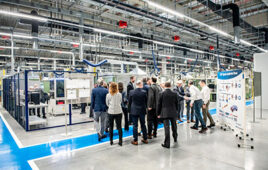 How many good solar projects are waiting for money? They simply don’t exist. There are countless investors with real money at their disposal looking for solar and other energy projects to fund. They are looking for a few key items to satisfy their project requirements so they can deploy the capital. Ultimately, investors do not make a return by keeping the money for themselves, it has to be put to work.
How many good solar projects are waiting for money? They simply don’t exist. There are countless investors with real money at their disposal looking for solar and other energy projects to fund. They are looking for a few key items to satisfy their project requirements so they can deploy the capital. Ultimately, investors do not make a return by keeping the money for themselves, it has to be put to work.
Projects with good control of the site through a lease or ownership and the ability to connect to the grid have met two thirds of the project requirements. Projects need to be able to stay in place and retain access to the energy grid for the term of the agreement, so the legal termination of those agreements needs to be limited or completely eliminated. Site control and interconnection are necessary parts of a solar project, but rarely the missing link. The offtaker power purchase agreement is where the chicken meets the egg and where project financing tends to fall off. While the economics play a large role in making a project work, if everything else is okay in a project, there is always an install price that makes the economics work. Installation price is the variable in every financial model.
To put the importance of project financing into perspective, a recent report by Vote Solar compared 3rd party ownership versus cash purchase in the California market. During the first half of 2012, over 8,000 residential systems were installed under a 3rd party owned structure for a total of 66% of the total residential installations. In comparison, only 84 commercial projects used a 3rd party ownership structure, a mere 26% of the total installations.
The question is why this divergence is happening. While the residential market is growing leaps over bounds, the commercial market is still stuck building projects for a limited few that can buy the systems outright. After all, we see the news reports about Walmart, Kohls, etc. entering into PPAs with solar investors. As an industry we know our growth will come from more paths for 3rd party financing so that developers and contractors have a way to create a value proposition for their customers.
Credit is the ultimate missing link in the commercial solar market. A credit that is uniform, repeatable and bankable. Walmart and a residential customer have something in common; they have a reliable credit score. Large public companies have Moody’s and S&P while individuals have the FICO score. Within minutes, an investor can identify the potential credit risk of the solar customer and decide to move a project forward. Unfortunately the rest of the commercial market has a more muddied underwriting process which ultimately leads to almost all projects being passed over.
The potential market size of commercial rooftop solar is enormous. As the solar industry struggles to find the path to sustained growth and backlog, we must focus on helping investors fund more projects into safe assets. In my opinion, our way of making almost all projects bankable is to solve the credit hurdle of private commercial buildings.
Brandt is co-founder of an solar startup called Demeter Power Group, managing editor of SolarWakeup.com, contributor to Solar Power World and loves to help other start ups/trade associations innovate within the solar industry. He believes in the importance of solar as a part of the U.S. energy portfolio and drives an EV. He has two amazing children and hopes they will benefit from the work he is doing today in the solar industry. Drop him a line on Twitter at @YannBrandt or at [email protected] .
Filed Under: Green engineering • renewable energy • sustainability




